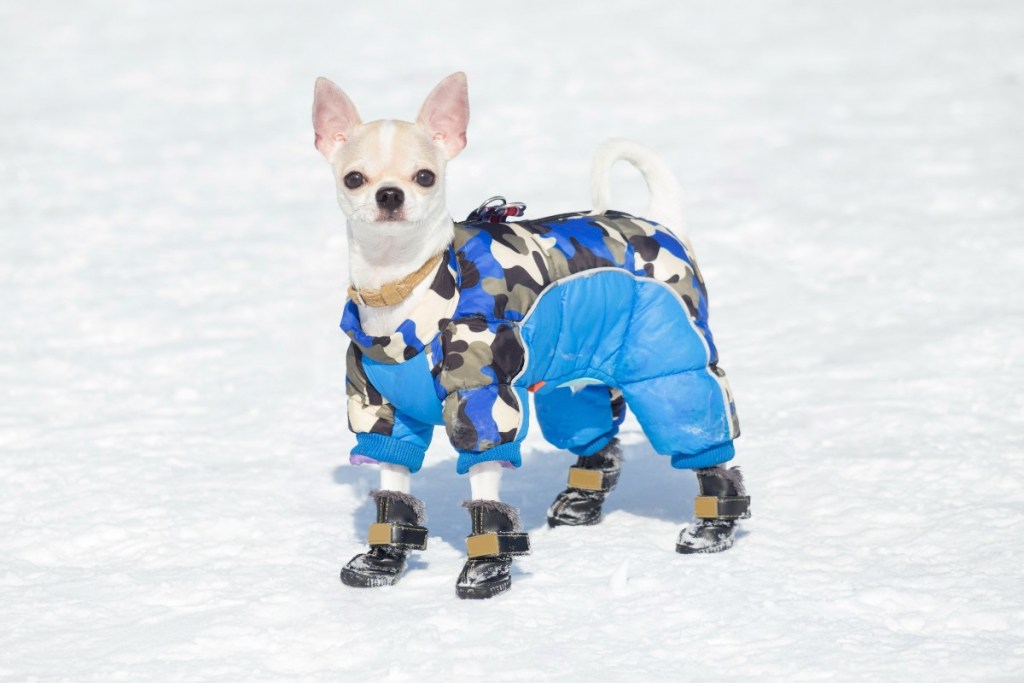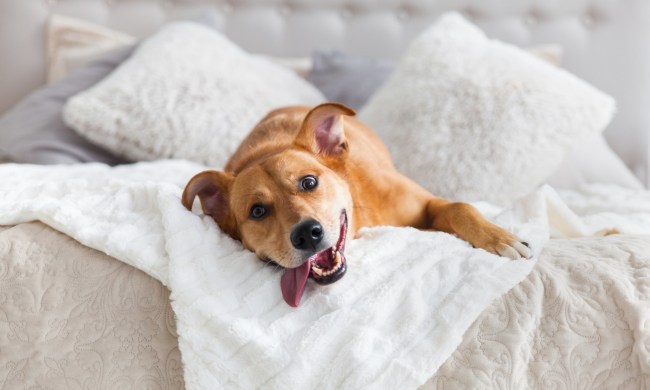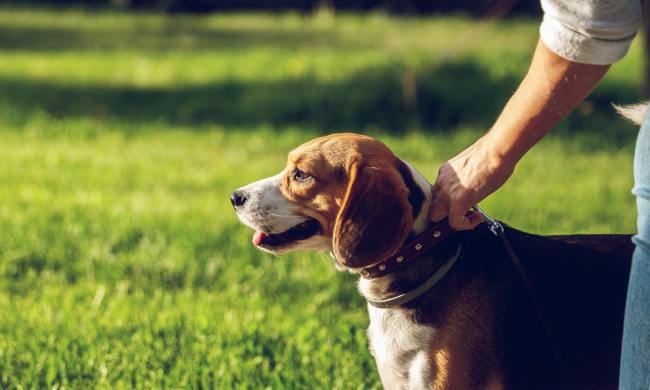Your dog may love going for walks and playing in the snow. It can be so much fun for you to watch him run around and jump in the fluffy white stuff, and it may take your mind off the fact that you’re freezing! Other pups may not be fans, but they still need to potty outside.
Regardless of your pet’s hot take on cold weather, frightful weather conditions can have some not-so-delightful effects on your pet’s paws. Unlike humans, dogs don’t typically wear shoes, although they can. You can find winter boots for dogs in pet stores. Should you get some for your pup? Read on.

Is it bad to put boots on a dog?
Typically, it’s not a bad idea to put boots on your pup. In fact, some experts think it’s a good idea. The salts that people put on the ground to prevent ice from forming can irritate your pet’s paws. The salts are also toxic, so you wouldn’t want your pet licking their paws post-walk. Snow and ice can lead to dry, cracked paw pads and even frostbite.
Do vets recommend boots for dogs?
You may feel silly putting your tough-looking gentle giant of a Great Dane in cute little winter boots, but vets are fans of these products. They can prevent chemical burns and can also keep your dog from getting toxic salts on their paws that they lick off when they get home. Boots may even make going outside in cold temperatures more comfortable for your pup.
Can dogs go in the snow without boots?
Vets say it’s not necessary to put winter boots on your dog. Some dogs simply don’t take to them, and their paw pads are typically able to tolerate winter elements. Boots simply help alleviate discomfort. Paw wax and frequent inspections of your pet’s feet can help mitigate issues.
Best Winter Boots for Dogs
Finding the best boot for your dog may involve trial and error, but these products get high marks from other pet parents.
QUMY Dog boots
QUMY’s dog boots are equal parts fashionable and functional. The anti-slip sole makes it easier for your pet to navigate the snow and ice, and the secure fit helps to keep the boots on. Multiple color options are available, including black, purple, and red.
Ultra Paws Durable Dog Boots
Ultra Paws’ dog boots are known for being easy to put on and keep on. Because they’re made with water-resistant nylon material, they will keep your pup’s paws dry even in snow. As all-weather boots, they can be repurposed in the summer when walking on hot pavement can be uncomfortable for your furry friend.
EXPAWLORER Waterproof Dog Boots
It gets late early during the winter, but the EXPAWLORER’s reflective material makes it easy for drivers and bikers to see your pet. These boots are also skid-resistant, making them optimum for dogs—particularly older ones—who have extra trouble navigating icy sidewalks.
RUFFWEAR Polar Trex Waterproof Winter Dog Boots
These brightly colored boots are perfect for the canine who’s ready to make a winter statement. Their green-blue-and-gray color scheme pops against the white snow. These boots are also functional. Their hook-and-loop closure keeps paws snug and warm, and their waterproof material keeps them dry.
XSY&G Dog Boots
Pet parents of pooches with sensitive paws love the maximum protection provided by XSY&G’s boots. Reviewers rave that these boots are durable and work on all kinds of terrain, from flat to rocky. They’re also reflective and anti-slip, making them ideal for night walks in the snow.
Your pup may need more than a winter coat. Dog winter boots are more than a fashion statement! They can help protect your pet’s paws from the elements as well as from toxic salts. Look for boots made with water-resistant material and known for preventing pups from slipping on ice. Before making a purchase, be sure to measure your pet’s paws—otherwise, putting the boots on and keeping them on will be more difficult. Remember, your pet’s paws might be durable, but it’s still important to keep them safe during weather changes.




